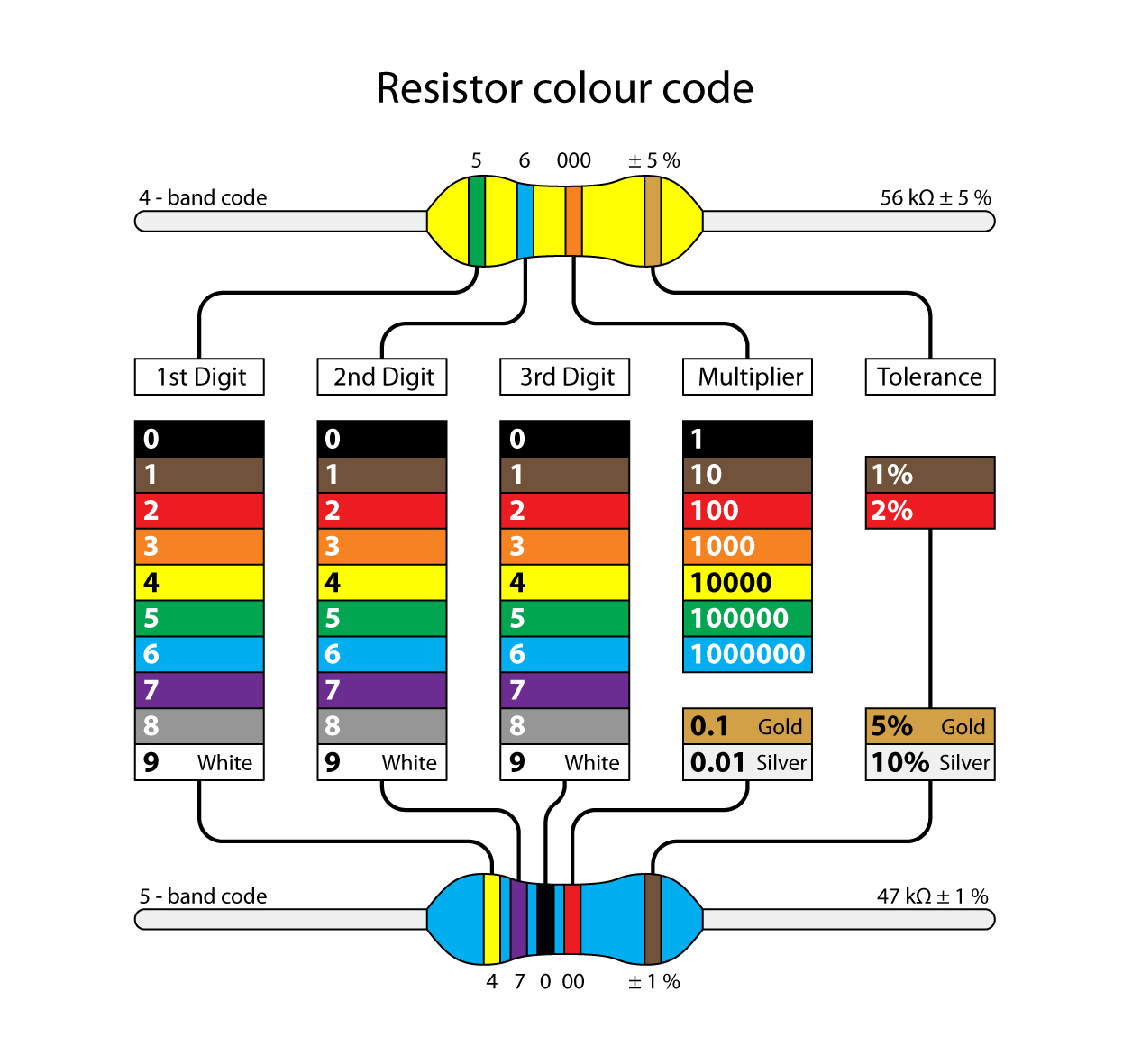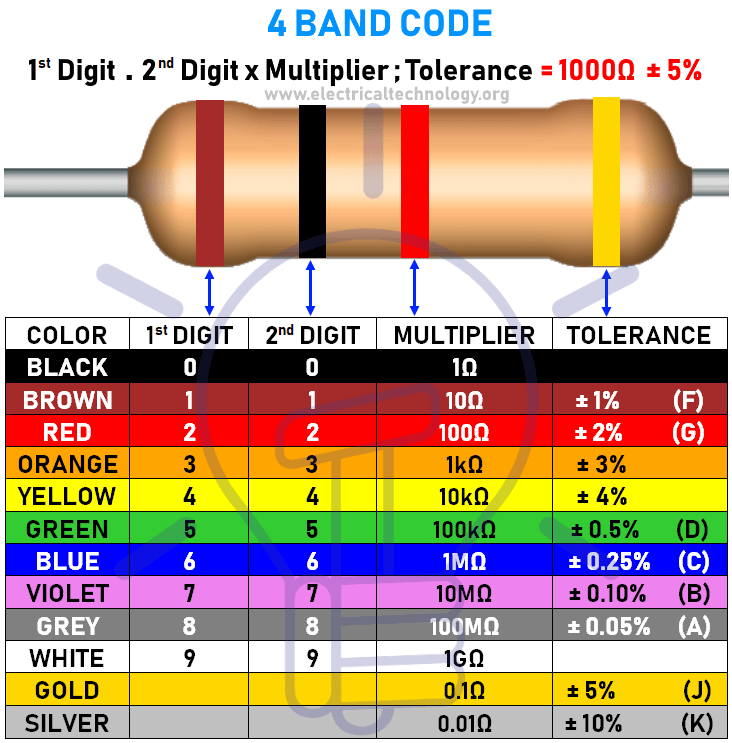

It means that given the incertitude provided by the manufacturer, the effective value of the resistor varies from 198 kΩ (220 kΩ - 220 kΩ x 10/100) and 242 kΩ (220 kΩ + 220 kΩ x 10/100).
#Resistor color code series
The most widely used for consumer electronics is the E24 series (tolerance ±5%): in this series, 24 standard values are defined and for which it is possible to use a multiple of 10 (it is known as «decade»). These values are classified by series associated with a specific tolerance. Resistor values are standardized and defined by the international standard «IEC 60063» entitled «Preferred number series for resistors and capacitors». It is defined by the international standard IEC 60062 entitled "Marking codes for resistors and capacitors".Įxample of a resistor (source ):
#Resistor color code code
The correspondence between the digits and the colors of the bands is named the resistor color code: this code is used to determine the value of a resistor or indicate its values by using a color code. In most cases, the resistor is presented with colored rings (bands) around it. This information is deliberately brief - but sufficient - because of the many electronic lessons that can be found on the Internet.

#Resistor color code how to
The TCR is measured in ppm/☌ units.This lesson explains how to read the color code painted on the bands of the resistors. The final band represents the temperature coefficient of resistance (TCR), which is the change in resistance per unit resistance as the temperature changes by 1 degree C. The third band is the multiplier and the fourth band is the tolerance.įor 5-band resistors, the first three bands represent the first three significant digits of resistance, followed by the multiplier band, which is then followed by the tolerance band.įinally, for 6-band resistors, the first three bands represent the three digits of resistance, followed by the multiplier band, then followed by the tolerance band. While a fourth band, tolerance, is not available, the tolerance is always ☒0%.įor 4-band resistors, the first two bands represent the first two significant digits of resistance. In 3-band resistors, the first two bands represent the first two significant digits of the resistance value in Ohms. Gold or silver bands are always located at the right-most end as they are only used for multiplier and tolerance bands. The bands are read from left to right, with the tolerance band being often printed at a wider gap from the other bands to distinguish reading direction. Resistors are painted with three to six bands which indicate resistance, tolerance, and sometimes the temperature coefficient of resistance. This resistor color code calculator is designed to help identify and calculate values on your resistors. Many resistors have color-coded bands which identify varying resistance values and tolerances.

Circuit design engineers can use resistors to control both the voltage and amperage at a particular point in a circuit. To prevent damage to sensitive components from a voltage overload, a resistor can be used in series with that component, creating a voltage drop and protecting the component from harm. A resistor is an electrical component regulating the flow of current in a circuit.


 0 kommentar(er)
0 kommentar(er)
